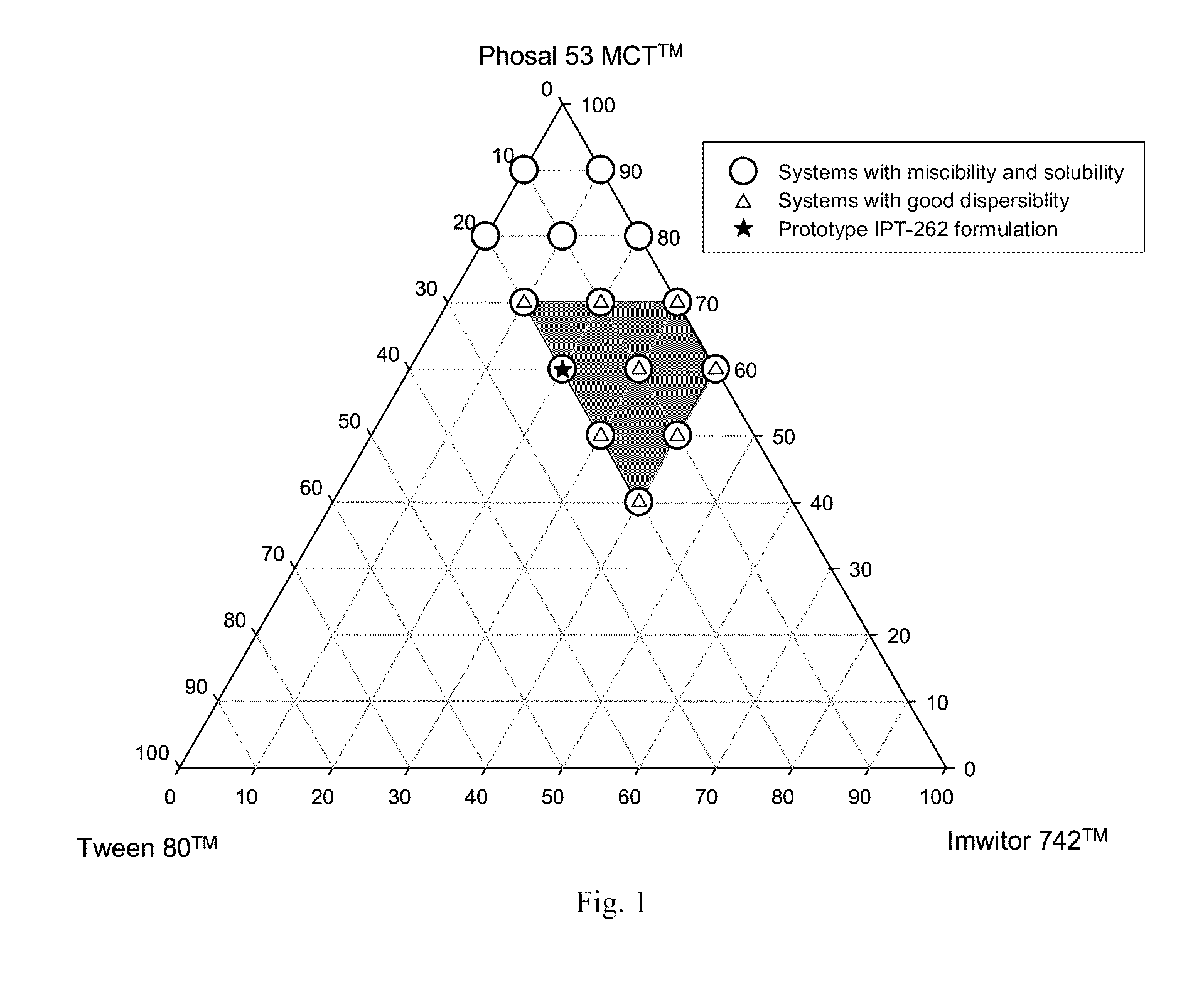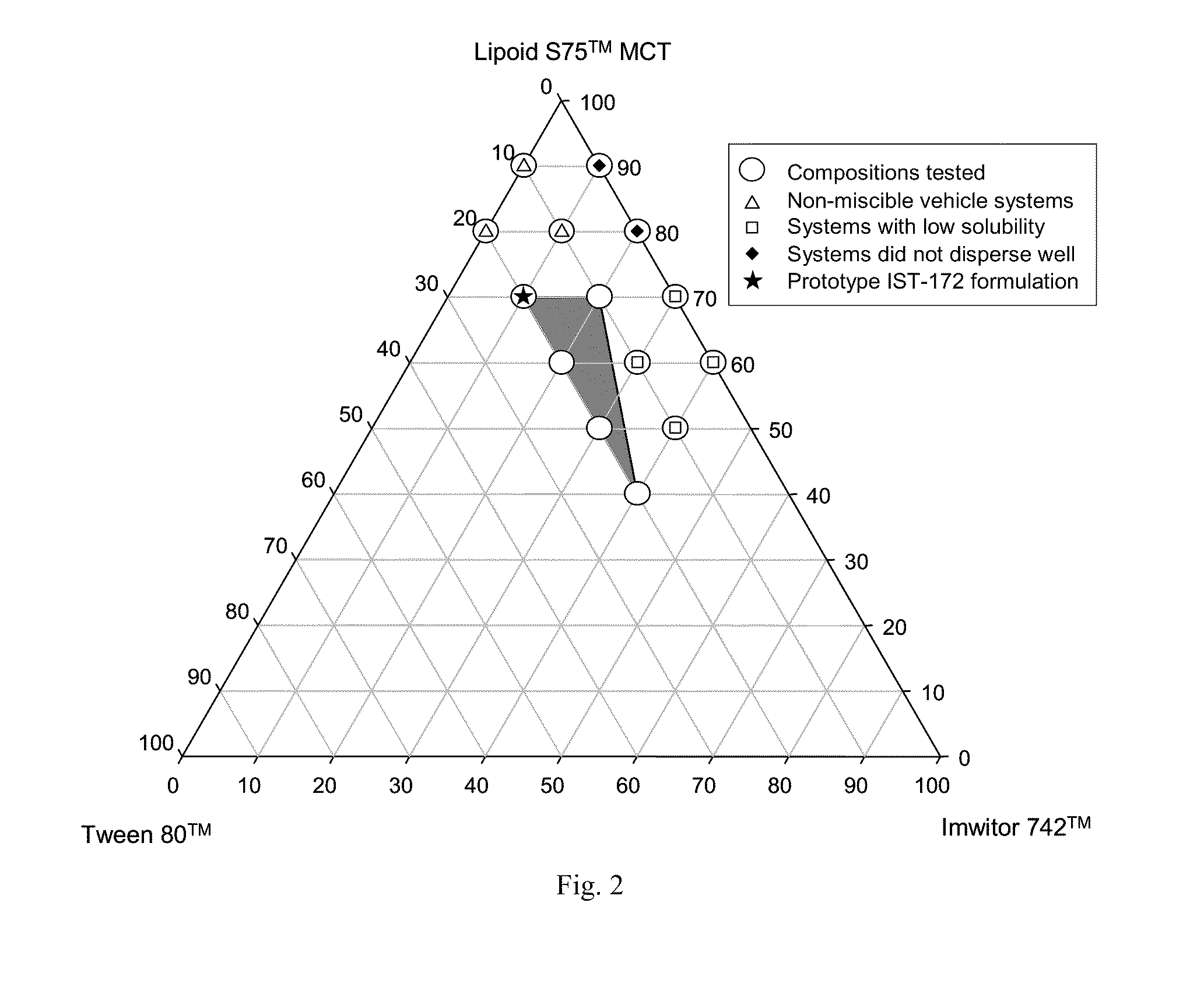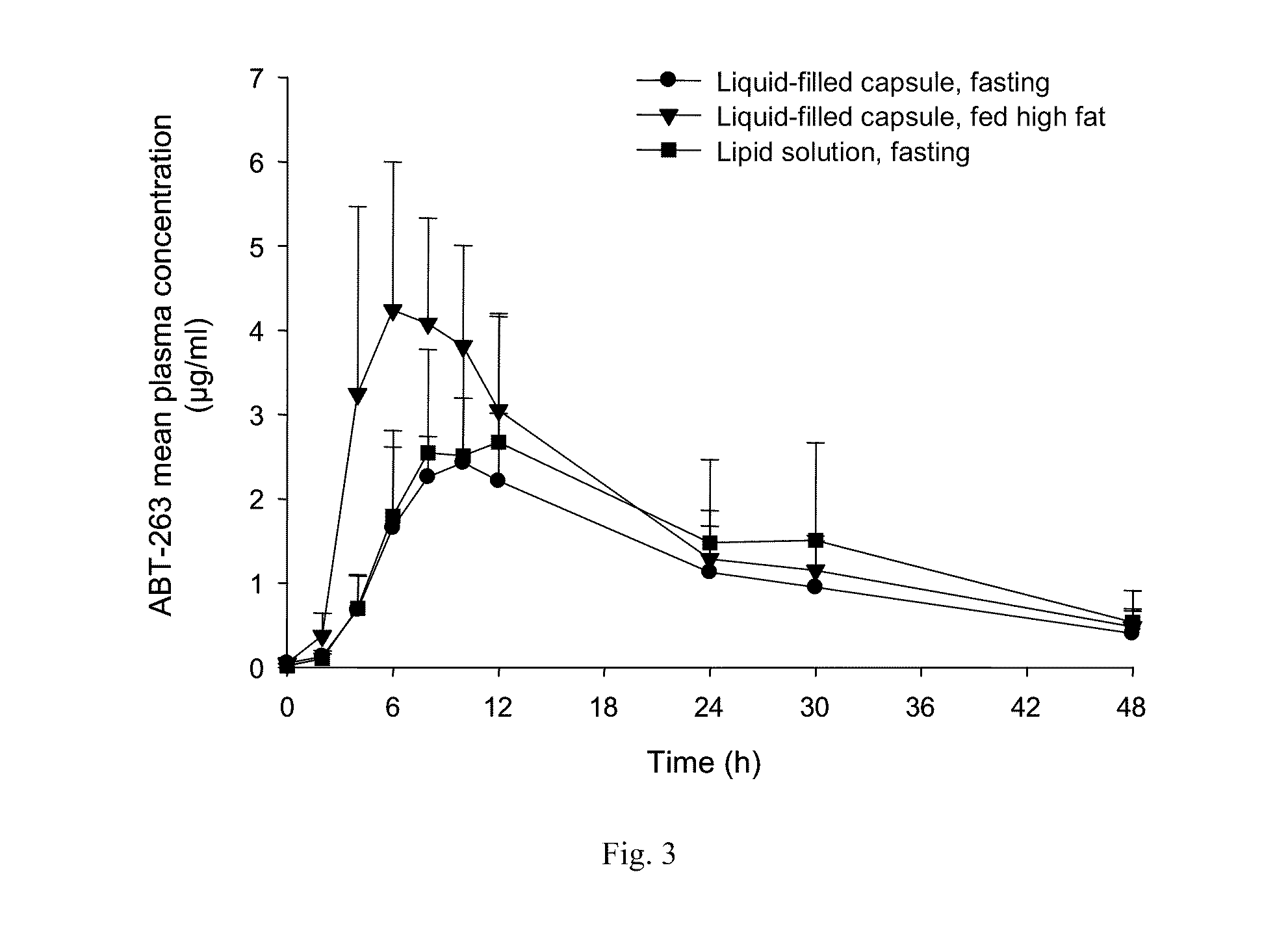ABT-263 capsule
a technology of apoptosis-promoting agent and capsule, which is applied in the direction of capsule delivery, drug composition, form change of pharmaceutical products, etc., can solve the problems of presenting challenges, unable to conveniently present 461 publication in capsule form, and unable to provide dilute solution of abt-263 such as 25 mg/ml solution, so as to reduce the formation rate of sulfoxide by-products and reduce the formation rate of sulfoxid
- Summary
- Abstract
- Description
- Claims
- Application Information
AI Technical Summary
Benefits of technology
Problems solved by technology
Method used
Image
Examples
example 1
Solubility of ABT-263 Parent and Bis-HCl Salt in Lipid Solvents
[0238]Solubility of ABT-263 parent (free base, crystalline Form I) and ABT-263 bis-HCl salt was tested in a variety of lipid solvents and solvent mixtures in ambient conditions. Trademarked solvents in this study, unless identified hereinabove, are as follows (substantially equivalent products from other manufacturers can be substituted if available):[0239]Miglyol 810™ of Sasol: caprylic / capric triglycerides;[0240]Capmul MCM™ of Abitec: glyceryl caprylate / caprate;[0241]Captex 300™ of Abitec: caprylic / capric triglycerides;[0242]Labrafil M 2125 CS™ of Gattefossé: polyoxyethylene glyceryl linoleate;[0243]Tween 20™ of Uniqema: polysorbate 20;[0244]Labrasol™ of Gattefossé: polyoxyethylene glyceryl caprylate / caprate;[0245]Cremophor RH40™: polyoxyethyene (40) hydrogenated castor oil.
“PE-91” is Phosal 53 MCT™+ethanol, 9:1 by volume. “LOT-343” is Labrafil M 1944 CS™+oleic acid+Tween 80™, 30:40:30 by weight.
[0246]Solubility data a...
example 2
Miscibility of Ternary Excipient Systems with ABT-263 Parent and Bis-HCl Salt
[0248]Ternary systems consisting of two solvents and a surfactant were evaluated for miscibility and drug solubility using 20% by weight ABT-263 free base or 10% by weight ABT-263 bis-HCl salt. Solvents evaluated included Labrafil M 1944 CS™, Imwitor 742™, oleic acid, Capmul PG-8™, Capmul PG-12™, Lauroglycol 90™ (propylene glycol monolaurate, available from Gattefossé) and Phosal 53 MCT™. Surfactants evaluated included Tween 80™, Cremophor RH40™, Gelucire 44 / 14™ (polyoxyethylene glyceryl laurate, available from Gattefossé) and Labrasol™. Data are presented in Table 5.
[0249]
TABLE 5Miscibility of ternary systems and solubility of ABT-263 parent and bis-HCl saltMiscibilityABT-263 solubilityTernary system% by weightof excipients10% salt20% free baseLabrafil M 1944 CS ™30:45:25✓✓xImwitor 742 ™40:35:25✓✓xTween 80 ™30:40:30✓✓x(LIT systems)40:30:30✓✓xLabrafil M 1944 CS ™30:45:25✓✓✓oleic acid40:35:25✓✓✓Tween 80 ™30:...
example 3
Chemical Stability of ABT-263 Free Base and Bis-HCl Salt in Lipid Solution
[0252]Preliminary stability studies were conducted to allow a side-by-side comparison between lipid solutions of ABT-263 in bis-HCl salt and free base form. ABT-263 was dissolved in two separate sets of lipid vehicles, Phosal 53 MCT™ / ethanol (9:1 by volume; “PE-91”) and Labrafil M 1944 CS™ / oleic acid / Tween 80™ (30:40:30 by weight; “LOT-343”). No antioxidant was included, nor was headspace nitrogen purging performed. After aging of samples at 40° C. (stress condition) for up to 3 weeks, analysis of total sulfoxides indicated that free base was significantly more stable than bis-HCl salt in the solutions tested (Table 6). Total degradant levels also showed a similar trend (data not shown). The increase in degradant level was accompanied by color change. The bis-HCl salt solutions upon aging showed pronounced color darkening whereas the free base solutions exhibited very little color change.
[0253]
TABLE 6Sulfoxide...
PUM
| Property | Measurement | Unit |
|---|---|---|
| concentration | aaaaa | aaaaa |
| concentration | aaaaa | aaaaa |
| concentration | aaaaa | aaaaa |
Abstract
Description
Claims
Application Information
 Login to View More
Login to View More - R&D
- Intellectual Property
- Life Sciences
- Materials
- Tech Scout
- Unparalleled Data Quality
- Higher Quality Content
- 60% Fewer Hallucinations
Browse by: Latest US Patents, China's latest patents, Technical Efficacy Thesaurus, Application Domain, Technology Topic, Popular Technical Reports.
© 2025 PatSnap. All rights reserved.Legal|Privacy policy|Modern Slavery Act Transparency Statement|Sitemap|About US| Contact US: help@patsnap.com



